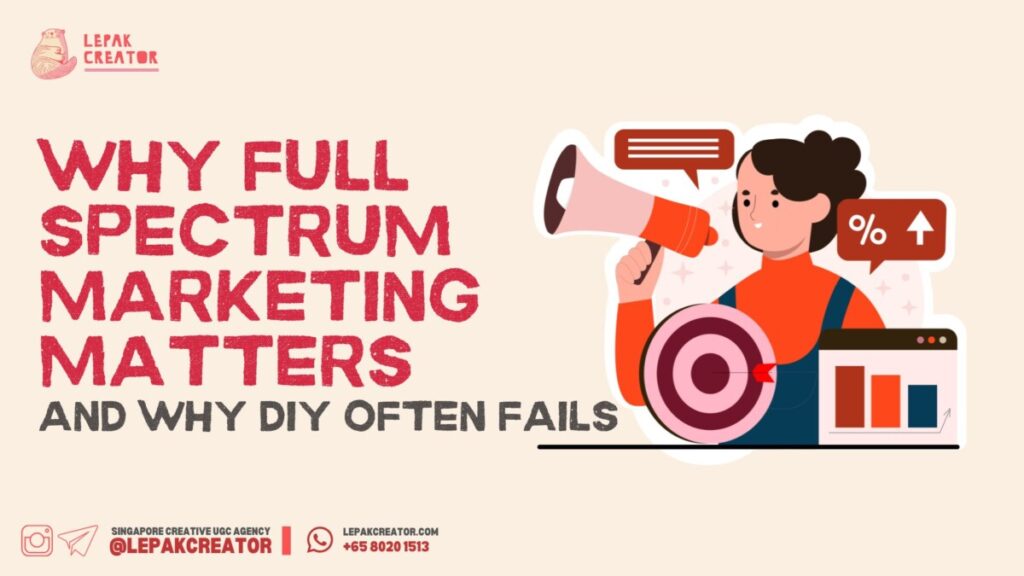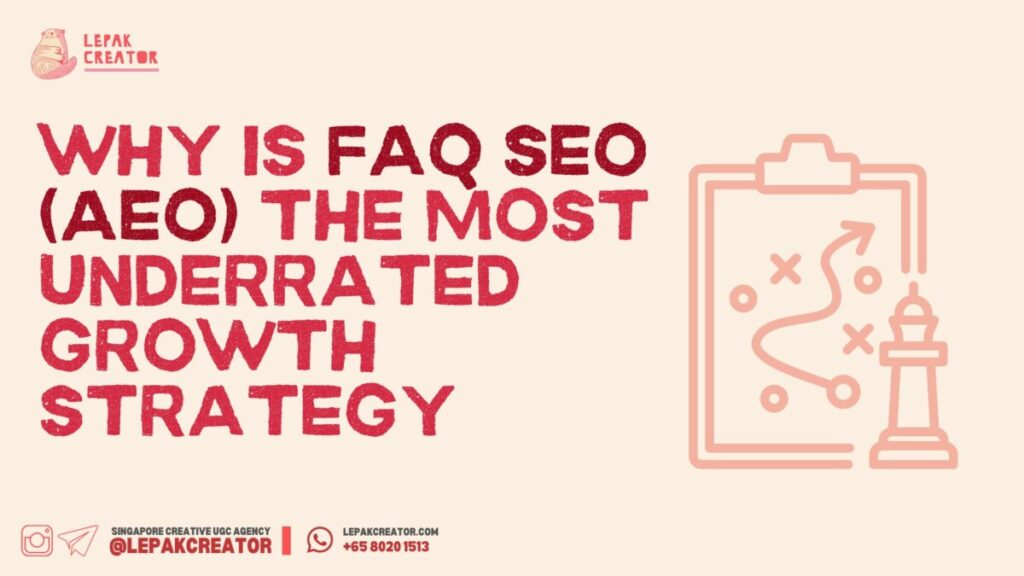Why Full Spectrum Marketing Matters More Than Ever — And Why DIY Marketing Often Fails

Before you dive into marketing on your own, it’s important to have clarity. Every aspect—branding, content, SEO, customer experience, social strategy, pricing, and more—plays a specific role in driving results. Knowing how each piece contributes to your business ensures that the time and effort you invest actually pays off. If you’re ready to move beyond […]
Why is FAQ SEO (AEO) the Most Underrated Growth Strategy — And Why Most Businesses Still Aren’t Using It

If you look at how people search today, you’ll notice something interesting. People no longer search like they used to. They don’t type one-word keywords. They don’t browse endlessly. They don’t even want to read long pages until they get the exact answer they need. What people do now is simple:They ask questions. Real, everyday […]
How to Rank #1 in Singapore: SEO & Social Media Marketing for Local Businesses

Although our core expertise is in Social media, UGC content creation, and Branding, our founder’s background spans the entire omni-marketing spectrum — from offline campaigns to search engine optimisation (SEO). Why does this matter?Because in today’s digital landscape, marketing channels don’t work in isolation. Social media builds attention, but SEO captures intent. When you connect […]
Why Social Media Marketers Need High-Converting Landing Pages to Maximize Ad Results

Social media marketing is a game of unpredictability. Organic reach fluctuates with every algorithm change, making it harder to consistently drive leads. Yet, businesses still expect results—leads that convert into paying customers. This is why running paid ads is often a necessity rather than a choice. Instead of waiting for non-urgent, low-intent organic leads, ads […]
Online Advertising & Strategies: The Pros, Cons and How to do it?

In today’s world, online advertising is a way to convey targeted marketing messages using the web. Through this approach, marketers can educate, inform, persuade, and remind their target audience about their products and services. For this reason, marketers must determine their objectives, identify their consumers, and choose the right channels. Paid social media ads and […]
What is the Difference between Responsive Website and Normal Website?

This article is specially catered to our Digital Marketing course students. Responsive websites differ from normal (or non-responsive) websites in how they adapt to different screen sizes and devices. Below are a few key differences between the two: Responsive Websites: 1.Adaptability to Screen Sizes: A responsive website adjusts its layout and content dynamically based on […]
Boost your organic Google Search Rankings with these 20 strategies

Ranking high in Google’s organic search listings for important keywords can be extremely valuable for driving traffic to your website. Google’s search engine algorithm is constantly being modified, but here are some fundamental strategies to help you improve your organic search engine rankings. 1. Define a Keyword List In most cases, it is unreasonable to […]
From SEO to Social Media: FREE Tools to Boost Your Online Presence

For businesses to thrive in today’s digital age, a strong online presence is essential. In spite of this, maintaining a website can be challenging, especially for small businesses with few resources. Fortunately, there are several free digital marketing tools available that streamline digital marketing management. From search engine optimization to social media management, these tools […]
8 Reasons to Invest In Your Website And Digital Marketing Strategy

Modern marketing and business practices have undergone a seismic shift as a result of this global pandemic. In today’s world, businesses rely heavily on robust websites to conduct their day-to-day operations and stay afloat like never before. At a glance, companies should demonstrate professionalism, trust, and relevance to their customers. Websites that provide people with […]
